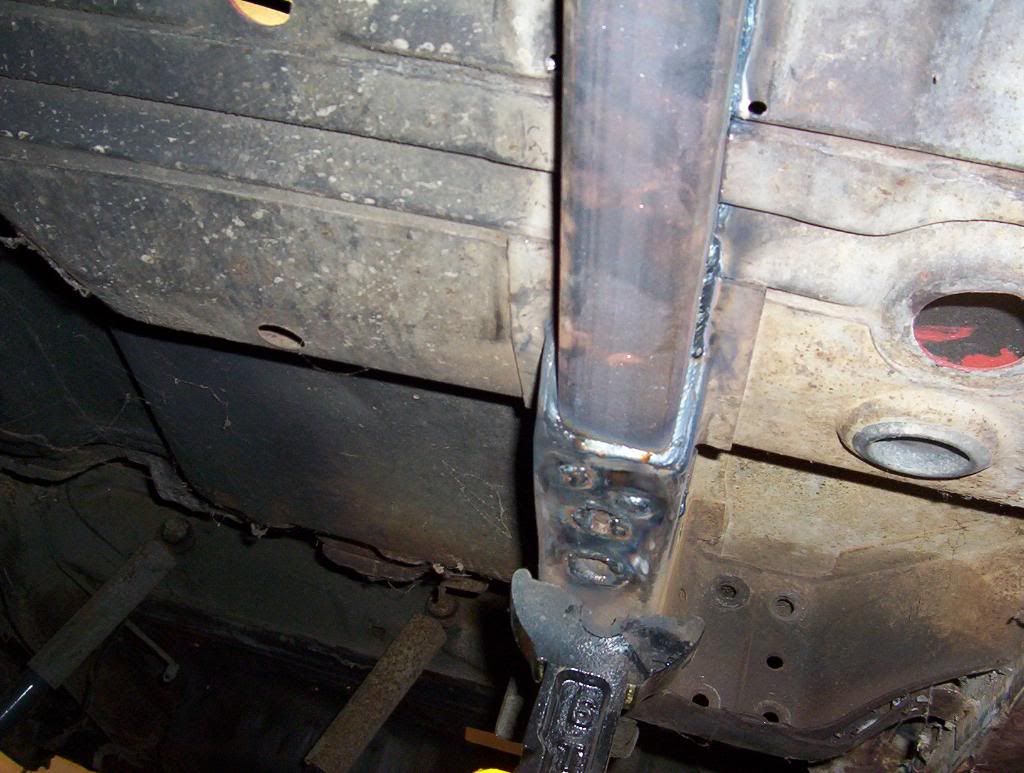72ScampTramp
Scamp Tramp
I like the layout there too. I was looking for a way to brace the floor for my buckets and that might be one more thing I can do just to make it a bit stronger.
I like the layout there too. I was looking for a way to brace the floor for my buckets and that might be one more thing I can do just to make it a bit stronger.
The mid-span supports were made out of 16ga. I would still weld to the floor pan. With the amount of flexing the panel adhesive will have to withstand I dont think it will last. Just my .02
Oh- the reason I used 1 1/2" x 3" is that I did not want to put anything in place lower than the frame rails, ground clearance is an issue with this build.
Andrew
In theory not a bad idea. But dont know how to get around putting holes in your floor pan via the sheetmetal screws that are necessary while the panel adhesive cures. This is a MUST with adhesive. You could fill the holes in with plug welds but it comes down to the same thing.
The mid-span supports were made out of 16ga. I would still weld to the floor pan. With the amount of flexing the panel adhesive will have to withstand I dont think it will last. Just my .02
Oh- the reason I used 1 1/2" x 3" is that I did not want to put anything in place lower than the frame rails, ground clearance is an issue with this build.
Andrew
if you want proof of the flex hook up an engine hoist to the from bumper holes of a dart without the front fenders bolted to the car. my front frame rails flexed a good inch or two before the car was lifted off of the jackstands that were placed under the frame rails at the firewall...ok your missing the point. The adhesive MUST be applied very thin. Screws are not needed just for panel alignment,but to make sure the gap is as tight as possible between the new and old metal.
Unless things have changed you cant apply the glue thick and depend on it to cure right. At least with welding you can bridge some gaps.
Your dreaming if you think the floor pan doesnt flex. As it was put by BJdakron,these A bodies have all the stiffness of a cooked lniguinie noodle. Mopars are some of the first unit body cars ever made and as such theres a lot of room for improvement. One thing other builders started doing is using urethane to glue the front windows in thier vehicles. It made the windsheild part of the structure and much stronger. Mopars used buytl,partly because it was what was available but also because the winshield must be free to move separate from the car,or it cracks. My point being;unit body cars flex quite a lot,otherwise there would be no need for frame connecters
if you want proof of the flex hook up an engine hoist to the from bumper holes of a dart without the front fenders bolted to the car. my front frame rails flexed a good inch or two before the car was lifted off of the jackstands that were placed under the frame rails at the firewall...



I want build upon your idea a bit. The 4 attachment points for buckets form a roughly square shape. One could build a boxed area under the floor pan and tie it into the frame. It's not really that simple actually,never mind...
For those who put connectors in while still using the car. What difference did you notice in the ride/handling?
